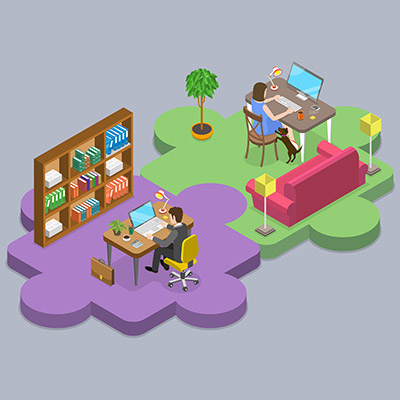It’s incredibly important that your business understands where it’s allocating its time, money, and resources, especially with technology-related challenges. Today we want to discuss what is called the digital employee experience, or DEX, and how understanding your employees’ relationships with technology can shape the way they approach the workday.
Innovation is something that stems from creative thought, and it’s something that is generally not associated with your average business’ IT department. IT tends to be practical and logical, not necessarily creative. All that said, there is immense value in going against the grain and solving problems in a creative way. Today, we want to focus on how you can encourage your IT department to think creatively about their responsibilities so they can innovate and do amazing things for your business.
When you consider technology management for your business, what comes to mind? Do you replace technology as it breaks, or do you take steps to prevent it from breaking in the first place? The traditional model of break-fix IT could be costing your organization an arm and a leg. We want you to know that there are better solutions out there than break-fix IT.
There are a few different types of stress that may be present in your business right now, either or both of which could be causing no small amount of distress to your team members and disruption to your processes. Let’s explore the sources of these stresses—digital/workplace friction and interpersonal friction—and what can be done to help resolve them.
The past few years have seen major shifts in the workforce, and not the kind that employers ever want to see. More people than any other time have willingly left their places of work, with social media hashtags like “#quittingmyjob” and “#quitmyjob” getting hundreds of millions of views. Let’s consider why this is, and what you can do to keep your employees engaged
Getting the right technology for your business can be confusing and downright frustrating if you don’t know what you are looking for. After all, technology is supposed to make life easier and keep your business more efficient and organized. With so many rapidly evolving technologies now available, it can be hard to choose which to deploy inside your business. Today, we’ll go through three tips that can help you identify and deploy the technology that will work for you.
People on average spend nearly 3-to-5 hours of their day on their phones. Today’s smartphones are not only one of the coolest pieces of technology ever invented, it legitimately could be one of the most useful devices any person could use for business; if they are willing to use it that way. Today, we will establish what smartphones are mostly used for and how to readjust your smartphone usage to be your most productive.
You might have encountered the term MSP while navigating our website, but what does it mean to be a managed service provider? Today we want to get into the nitty-gritty of what we do for our clients and how you can benefit from our services. It’s our goal to show just why managed services have completely changed the landscape of business as we know it today.
If the pandemic has proven anything, it’s that companies need to be flexible in their operations, perhaps more so now than ever before. However, this flexibility has also led many to reconsider what the office of the future looks like. Companies are starting to ask how much space is truly necessary and whether or not they actually need an office to remain operational.
We talk a lot about the individual ways that managed IT services can help your organization save time and money, but today we thought we’d take a look at some of the baseline numbers associated with partnering with a capable managed IT service provider.










